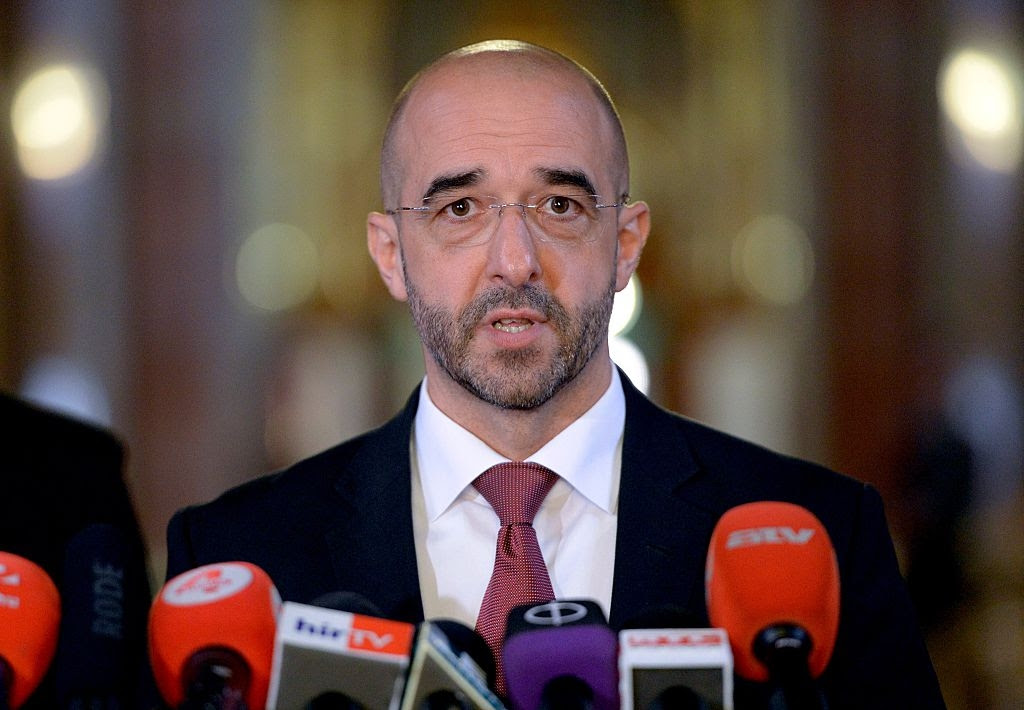The European Commission has proposed a new Pact on Migration and Asylum for the European Union in the hope that it will solve the deep-seated political crisis that the issue of migration continues to pose in the EU.
The European Union remains fundamentally divided over the question of migration into the continent and has been so for years. During the 2015 migration crisis, when EU leaders agreed to relocate 160,000 migrants and refugees from camps in Italy and Greece, assigning each EU member state a fixed quota, Hungary, Poland and the Czech Republic refused to receive migrants. The refusal prompted the European Commission, in 2017, to start proceedings against the three countries at the Court of Justice of the European Union. In April 2020, the Court ruled that Poland, Hungary and the Czech Republic had broken EU law by refusing to participate in the EU’s relocation agreement.
Migration into the continent continues apace and has even increased. Accordingto the EU’s own statistics:
”In 2019, 676 300 asylum seekers applied for international protection in the 27 current Member States of the European Union (EU-27), up by 11.2 % compared with 2018. This was the first time the number of asylum applications increased year-to-year since 2015.”
(In 2015, a record number of 1.3 million asylum seekers applied for asylum in an EU country).
The European Commission’s new proposal is based on three main elements: The first is ”more efficient and faster procedures”. For the first time, entering the EU will include:
”… a pre-entry screening covering identification of all people crossing the EU’s external borders without permission or having been disembarked after a search and rescue operation. This will also entail a health and a security check, fingerprinting and registration in the Eurodac database… As part of this border procedure, swift decisions on asylum or return will be made, providing quick certainty for people whose cases can be examined rapidly”.
This means that frontline states, such as Italy and Greece, will have to shoulder the burden of screening and checking migrants, thereby making the entire initial asylum procedure more taxing, at least for Italy and Greece.
The second element of the Pact is:
”Fair sharing of responsibility and solidarity: Member States will be bound to act responsibly and in solidarity with one another. Each Member State, without any exception, must contribute in solidarity in times of stress, to help stabilize the overall system, support Member States under pressure and ensure that the Union fulfils its humanitarian obligations”.
The solidarity principle is at the core of the political conflict with Central European countries in the EU over migration — with what critics seem to feel are overbearing authoritarian overtones — but the Commission evidently continues to insist that they have struck the right balance with the new Pact. According to Ylva Johansson, the European Commissioner for home affairs:
”…I think we are finding the right balance where we show solidarity towards migrants, asylum seekers and between member states, but that we’re also clear that those who are not eligible to stay – they have to be returned.
”It’s obvious to everybody that ad hoc solidarity is not enough. So we need a proper system, but we need a proper system which also answers the pressure that member states can be under.”
In seeking to alleviate some of that ”pressure,” the new migration pact allows member states to opt out of the migrant relocation scheme, on condition that those member states instead take on the responsibility of returning migrants that are not granted asylum in the EU to their countries of origin.
According to Politico, however:
”A country that decides to sponsor returns would have eight months to implement them, and it would even be able to decide which nationality of migrants it wants to try to return. But if it fails to implement the returns, it would have to take in refugees instead — and it would not have a choice when it comes to their nationality”.
This stance means that countries such as Hungary, Poland and the Czech Republic might still end up having to take migrants, if they fail to keep within the time limit. What, however, if they still refuse?
The third element is a change in the way that the EU cooperates with the non-EU countries, where migrants originate. According to the Commission:
”The EU will seek to promote tailor-made and mutually beneficial partnerships with third countries. These will help address shared challenges such as migrant smuggling, will help develop legal pathways and will tackle the effective implementation of readmission agreements and arrangements. The EU and its Member States will act in unity using a wide range of tools to support cooperation with third countries on readmission”.
This means, presumably, that the EU will try to work with countries of origin to stop the widespread — and highly profitable — trafficking and smuggling of migrants into Europe, something that has largely been unsuccessful thus far.
Finally, the Commission also promises:
”The management of external borders will be improved. The European Border and Coast Guard standing corps, scheduled for deployment from 1 January 2021, will provide increased support wherever needed.”
The proposed system invariably gives rise to multiple questions about its practical viability: Will frontline states become efficient at screening migrants? Will the planned increased border control work? How, exactly, are widespread, years-long people-smuggling and human trafficking by gangs who profit immensely from it, going to be stopped?
As a professor of migration and refugee law at the University of Copenhagen, Thomas Gammeltoft-Hansen, has pointed out:
”The big gamble is that you are betting on all members states each living up to their part of the responsibility. Frontline states have to take a bigger role in the initial reception; other member states in terms of later relocating asylum seekers or taking responsibility for returning those rejected. But it only takes a few states not living up [to] their commitments and then the entire system breaks down.”
The above are practical questions relating to management of migration. However, the question at the core of the internal EU conflict over migration in Europe is not practical but political: whether the EU should take any migrants at all. On that question, the European Commission and the Central and Eastern European countries could not be further apart. According to Commissioner for Home Affairs Ylva Johansson:
”Migration has always been and always will be part of our societies. What we are proposing today will build a long-term migration policy that can translate European values into practical management. This set of proposals will mean clear, fair and faster border procedures, so that people do not have to wait in limbo. It means enhanced cooperation with third countries for fast returns, more legal pathways and strong actions to fight human smugglers. Fundamentally it protects the right to seek asylum”.
Central European countries have no wish to accept any migrants at all.
”[W]e must ensure that the external borders of the EU and the Schengen Area remain perfectly sealed along all sections,” wrote Zoltan Kovacs, Hungary’s Secretary of State for International Communication and Relations, in response to the European Commission’s proposal. ”Though it appears under a different name in the European Commission’s new package of proposals on migration and asylum, the migrant quota is still there, and Hungary opposes it, along with Poland and the Czech Republic,” he added.
It does not seem as if the EU, even with this new pact, is about to resolve the political conflict over migration anytime soon.
Judith Bergman, a columnist, lawyer and political analyst, is a Distinguished Senior Fellow at Gatestone Institute.





